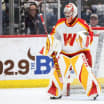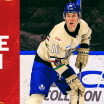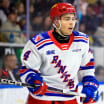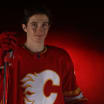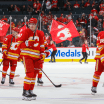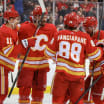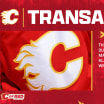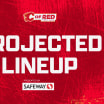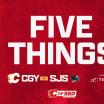FLAMES EXTRA - THE NUMBERS GAME
Analytics and advanced stats now play a huge role in hockey and the Flames are staying at the forefront
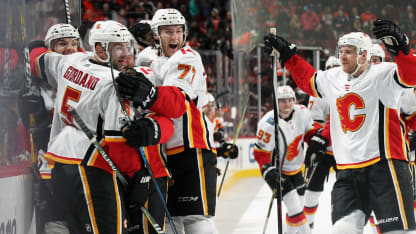
The journey to become a contender and hopefully lift hockey's Holy Grail one day is a tough road and many factors play a part in becoming a champion.
If you saw the movie Moneyball, you'll be familiar with the role analytics can play in building a winner: the Oakland Athletics, an MLB team with a limited budget, worked to find players the market was undervaluing in order to assemble a competitive team.
Advanced stats were applied in order to find these players, and in 2004, the Boston Red Sox won the World Series by utilizing these concepts.
These stats are commonplace in baseball now, and as of late, they've been making their mark on the hockey world.
"I think what's happened over the course of the last number of years is there's more information available," Flames General Manager Brad Treliving said. "I think that we've become more apt at looking at different things and trying to measure different things and subsequently using those to assist us with our decision-making process.
"At the end of the day, it's helping you try to make better decisions."
Corsi is the public face of hockey's advanced stats movement. A proxy for determining offensive zone time, it adds up all shots on net, missed shots, and blocked shots. A player or team with a Corsi-for over 50%, therefore, spends more time in the opponent's zone than in his own - more time on the attack, as opposed to defending.
"I think that Corsi can be a bit of an indicator, and if a guy has a particularly good or bad Corsi it can be a starting point for then beginning to peel back the player and try to understand why," explained Flames Director of Hockey Analysis Chris Snow said.
"Corsi probably tells a story of whether the play tends to be in your end over in the other team's end, right. And so, over time, it's not terribly sustainable to win games if you're spending more time in your end than in the other team's end."
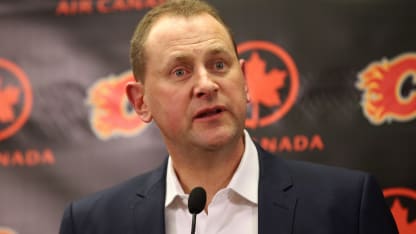
In Treliving's first season with the Flames, the team had a Corsi-for of 44.43% at five-on-five play, according to advanced stats site Natural Stat Trick. They were ranked one of the worst teams in the NHL by that metric.
Though they made the playoffs that season, and even won a round, their success was just that: unsustainable.
In the years since, though, the Flames' Corsi has improved: to 47.99%, to 50.53%, to the 51.95 it sits at today, a top-10 team in the NHL in the metric. Over that time they have become a better group on the ice, growing from a team that had the sixth-overall draft selection, to a playoff team, to one with even higher aspirations.
But that's just one way of tracking a team's potential success. The Flames have their own trade-secret metrics that they use in order to continue improving.
"What we try to do, or what we've done in Calgary, is we've sort of created our own system, if you will, of what we value, and say, 'okay, here are the certain things that we really feel are important,'" said Treliving.
"It's like anything, it evolves, through technology, through looking at things through a different lens, and we've tried to be aggressive, but you have to start from a base of what you believe in.
"What ultimately do you think is critical, and have your mind open to looking at different things."
That's led to a highly collaborative system within the Flames, one in which several voices are heard. Snow, who took an early interest in baseball analytics and was brought on board by the Minnesota Wild in order to help translate the stats movement to hockey, came to the Flames in 2011. Treliving became the Flames' general manager three years later, in 2014.
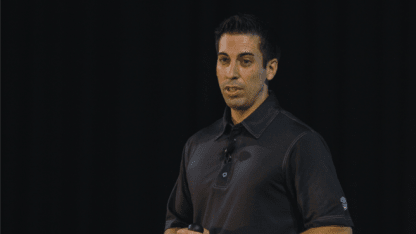
"When Brad got there we took an additional step because Brad just challenged all of us," Snow said. "How can we be better at every single thing we do. He asked a series of questions to me, 'How do we get better?'
"I think we always function as a group, meaning everyone is welcome to share any information or insight that might lead to a more comprehensive and better decision. And so we sit together a lot and anyone who has a suggestion or piece of information is welcome to share it. If it's a helpful one, it'll be a factor in the final decision."
A more analytically-inclined approach hasn't taken away traditional means of evaluating players, however. Scouting remains crucial to any team's success, and it's just about impossible to imagine evaluating players without actually watching them.
What the numbers do, however, is lend credence to what scouts and executives see happen on the ice - and help them identify areas they may be missing, as well.
"I think that whatever percent of the time it is, it's fairly high, call it 80-90% of the time, I do believe that the numbers and the eyeballs will agree," Snow said. "If they agreed 100% of the time, I don't think the numbers would have any value. And if they agreed 0% of the time, then I think the numbers would be wrong.
"But I do think that when they agree most of the time, but not all of the time, then there's good reason, and there's openness and acceptance from our group to say, okay, most of the times the numbers agree, and then this 10, 15, 20% they don't. Let's hear why we think the player's either better than or worse than the eyeballs are telling us. Then I think that's productive. That's where the numbers have, in my opinion, more value.
"I can take (the scouts') work, and so can they, and identify these attributes and then fit that together with data, and have a more comprehensive picture than if I only came with the performance data."
It all comes back to the journey being a crucial part of winning a championship. Sure, in the end, winning is what really matters - but understanding how the wins come about is necessary in order to achieve more of them.
"Goals and points are the last step in a lengthy chain of events," Snow said. "And I think part of the value in advanced statistics and the data that we would have is looking at that last step of the chain, which is the goal and the assist, the point, and saying, is this something that is likely to happen again?
"So the strength to having all of that supporting information is you can make a better projection moving forward than just if you looked at one season's final stat line."
Look no further than the Flames this season. They're one of the top Corsi teams across the entire NHL, but as of writing, they aren't one of the top teams in the Pacific Division in terms of points.
One potential explanation could be that the Flames' shooting percentage, until recently, has been among the lowest in the league. The Flames have been creating scoring chances, but they just haven't been going in the net.
"That's hockey," as Snow put it.
That doesn't mean things will continue playing out this way, however. The Flames scored 13 goals over the final two games of their seven-game homestand, resulting in two big wins.
They struck for five in an overtime win over Phialdelphia on Saturday.
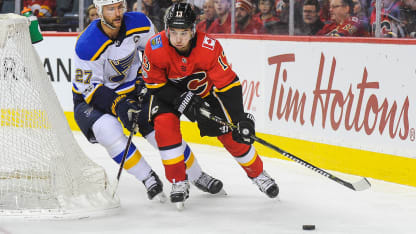
Underlying numbers hinted that this offensive outburst could be coming, and lo and behold, it did.
"Sometimes the result, if you will, doesn't you tell the whole story," Treliving said.
"Now, if we're doing these things regularly, consistently, at a certain level that we over time feel is the correct thing, then usually you're going to start seeing success. That doesn't always happen.
"It is the process. … It's not managing the process, it tells you the process of especially when a player is maybe going through a struggle, of okay, here's certain things that you can assist with. First of all, were we creating? If we're not, why? What are the things that are happening when we have the puck, when we don't have the puck, are we underwater in terms of giving up, whether it be chances or possession or all those types of things.
"So it can help fill in the blanks, if you will, of the story."
It's a never-ending process; a never-ending story. They will always be looking to improve their club, because that, too, is what should lead to more wins: not just the prediction of them.
"If it's not broken, it probably means you're not looking hard enough," Treliving said, speaking to his due diligence in building his team. "I'm encouraged in how we've been playing recently, but know there's more to give.
"I'm not a big believer in looking back. You know where we started, and the goal is to be better tomorrow than we are today, and to be better next month, better in January than we were in December, and so on and so forth. You work your tail off and you try to get better each day and hopefully you are.
"And sometimes it's not just big jumps you're taking every day. You're looking for incremental improvements. If you can find percentage points at certain times, yeah, if you've got a chance to try to help yourself to take a bigger step you look at it if it makes sense. But more often than not, you're trying to make those little steps each day and we're coming."
"I think we're better than we were when we broke camp, and that's what the league is. The league is competitive and it's who grows the most over the course of the season, and that's what we're attempting to do."
Those little steps are the accumulation of everything that goes into building and growing a hockey team. And it's the Flames' data analysis that's giving them more information, more tools, to take more and more of those little steps forward.
After all, it's difficult enough to win the Stanley Cup as it is. It only makes sense that the Flames use every single possible avenue at their disposal to try to make it happen - and that's exactly what they're doing.

